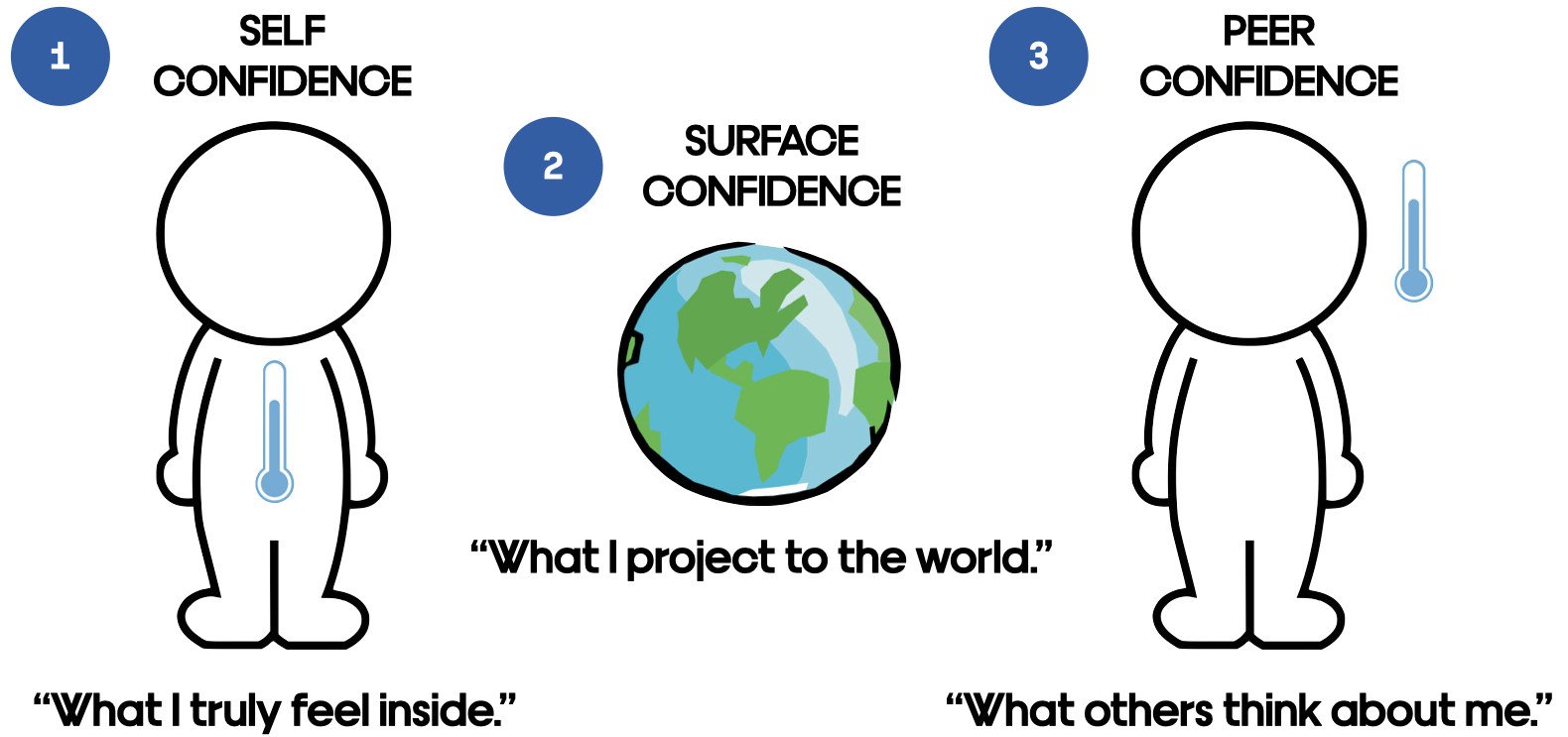The Confidence Conundrum
Confidence is something that is relevant to all of us. Our level of confidence can influence the way in which we behave, what situations we put ourselves in, and how others perceive us. But is confidence as black and white as that? In this pathway, we delve a little deeper…
Here at T2, we believe that confidence is a little more complex than it may appear on the surface. The Confidence Conundrum Theory states that there are 3 types of confidence:
1. Self Confidence - “what I truly feel inside.”
2. Surface Confidence - “what I project to the world.”
3. Peer Confidence - “what others think about me.”
Every person will have different levels of each type of confidence. For example, someone may have high levels of surface confidence and appear confident in front of others, however, have low levels of peer confidence and may actually feel very anxious about what others think of them. Similarly, someone may be confident in themselves, but struggle to display high levels of surface confidence.
To see what your confidence levels are like currently, rate yourself on the 3 types of confidence on the scales above.
High surface confidence/low self-confidence
People with high levels of surface confidence, but low levels of self-confidence, are likely to be suffering from imposter syndrome. Individuals with imposter syndrome appear to be confident and self-assured on the surface, however, internally, they have the inability to believe that their success is deserved or has been legitimately achieved as a result of their own efforts or skills.
High self-confidence/low surface confidence
Now, let’s flip the two types of confidence around and think about the individuals who have high levels of self-confidence, but low levels of surface confidence. These individuals feel self-assured and confident in themselves as a person, but don’t necessarily have the confidence to show that level of confidence externally. More often than not, those with high levels of self-confidence and low levels of surface confidence are likely to be introverted. They direct their energy inwards, and therefore, gain their energy from spending time on their own.
Peer confidence
Peer confidence is a little different to the other two types of confidence. Peer confidence is our perception of what others think of us. If an individual has low levels of peer confidence, they will think that others have a low opinion of them, when in reality, they probably don’t. What you have to remember is that when it comes to peer confidence, we have no control over what others think of us, and therefore, we need to concentrate on what we can control. Get your inner and surface confidence right; and the importance you place on peer confidence will decrease.
Obviously, the ideal situation is to have high levels of all 3 types of confidence, but this isn’t very realistic, especially with us not having any control over our peer confidence. The key is to focus on your surface and self-confidence…
Increasing Self-Confidence
Increasing your level of self-confidence isn’t an easy feat, but there are some things you can do to get you on your way, and relieve those imposter feelings:
1. Be willing to to acknowledge genuine praise - This is a no-brainer when it comes to improving our well-being. The next time somebody gives any kind of compliment (which they will, it’s human nature), don’t just let it fly by, use it as a sign that you are working hard and are heading in the right direction. Praise also gives us valid intel: “why did I receive that praise?”, “Is it something that I can repeat or learn from?”
2. Give yourself a break - Sometimes simply giving ourself a break is all we need. We all need to slack off a little sometimes. Doing this allows you to re-charge the batteries and be ready to go again, rather than continuously being too hard on yourself.
3. Preach your talents to others - this is one of the easiest ways to earn acceptance and appreciation for your own skills. Teaching and mentoring other people will give a sense of achievement unlike any other; people actually want to learn from you!
Increasing Surface Confidence
Increasing your surface confidence is all about stepping outside of your comfort zone, however, some may find this easier than others! Aiming to push yourself outside of your Comfort Zone just once a week is a great way for increasing your surface confidence at a controlled pace.
In Summary: the confidence conundrum highlights the 3 types of confidence we human beings have. By focusing on what we can control by aligning our surface and self-confidence, we can become more confident individuals and place less importance on what our peers think of us.
You can access more content like this with a T2 Hub licence.



